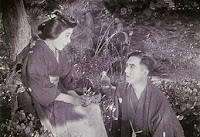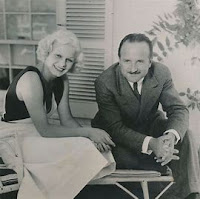The pioneers of silent films laid the groundwork for modern cinema, developing techniques, genres, and stars that continue to shape the industry. Here are a few key figures and their contributions: 1. Georges Méliès (1861–1938)
Contribution:
Known as one of the founding fathers of cinematic special effects, Méliès was a French illusionist and filmmaker famous for his imaginative films. His film A Trip to the Moon (1902) is considered a masterpiece of early cinema, using innovative techniques like multiple exposures, time-lapse, and hand-painted color.
Legacy: Méliès introduced narrative storytelling to cinema, showing that film could be a medium for fantasy, adventure, and complex visual effects.
2. D.W. Griffith (21875–1948)
Contribution:
Griffith is known for pioneering narrative film and developing cinematic language. His epic film The Birth of a Nation (1915) featured advanced techniques such as cross-cutting, close-ups, and flashbacks.
Legacy: Griffith’s work influenced the narrative structure of cinema, establishing him as an innovator in the art of storytelling through film, despite the controversy surrounding the racist content of The Birth of a Nation.
3. Charlie Chaplin (1889–1977)
Contribution:
Chaplin was an actor, director, and writer known for his iconic character, "The Tramp." His ability to blend comedy with social commentary made his work memorable. Films like The Kid (1921) and City Lights (1931) showcased his knack for visual humor and emotional depth.
Legacy: Chaplin’s influence on physical comedy, timing, and character-driven narratives remains strong. He helped elevate silent film to a sophisticated art form with universal appeal.
4. Buster Keaton (1895–1966)
Contribution:
Known as "The Great Stone Face," Keaton was a master of physical comedy, with a style that emphasized stoic expressions amidst chaotic slapstick. His work in films like Sherlock Jr. (1924) and The General (1926) showcased elaborate stunts and visual ingenuity.
Legacy: Keaton’s dedication to authenticity and physical stunts influenced generations of comedians and filmmakers, blending humor with daring action sequences.
5. Mary Pickford (1892–1979)
Contribution:
Dubbed "America’s Sweetheart," Pickford was one of the earliest female superstars and a savvy businesswoman. She co-founded United Artists in 1919 with Chaplin, Griffith, and Douglas Fairbanks, giving actors creative control over their work.
Legacy: Pickford broke ground for women in film, showing that they could be both artists and industry leaders.
6. F.W. Murnau (1888–1931)
Contribution:
Murnau, a German director, was known for his atmospheric, expressionist style. His film Nosferatu (1922) is a seminal horror film, and Sunrise (1927) remains one of the silent era’s most acclaimed works, notable for its innovative use of lighting and camera movement.
Legacy: Murnau’s artistry helped shape film as a medium for visual storytelling, influencing directors in both horror and drama genres.
7. Sergei Eisenstein (1898–1948)
Contribution:
Eisenstein, a Soviet filmmaker, was a pioneer of montage theory. His film Battleship Potemkin (1925) demonstrated the power of editing to evoke emotional and ideological responses, particularly in the famous "Odessa Steps" sequence.
Legacy: Eisenstein’s theories on editing transformed film structure, showing that editing could be used to manipulate time, space, and narrative intensity.
8. Douglas Fairbanks (1883–1939)
Contribution:
Fairbanks was a major star of adventure films, known for his athleticism and charisma. His roles in The Thief of Bagdad (1924) and Robin Hood (1922) established the swashbuckling hero archetype.
Legacy:
Fairbanks helped define the action genre, and his dynamic performances set the standard for physicality and charm in cinema.
Key Contributions to Film Techniques and Culture
Editing and Cinematic Language: Griffith and Eisenstein demonstrated how editing and shot composition could shape storytelling and influence the audience’s perception.
Physical Comedy and Stunts: Chaplin, Keaton, and Fairbanks pioneered slapstick and action, shaping the foundations of comedy and action films.
Expressionism and Horror: Murnau's work in German Expressionism helped shape the horror genre, using shadow and lighting to create mood and psychological depth.
The silent film pioneers were true innovators who created a visual language that remains integral to film today.






























